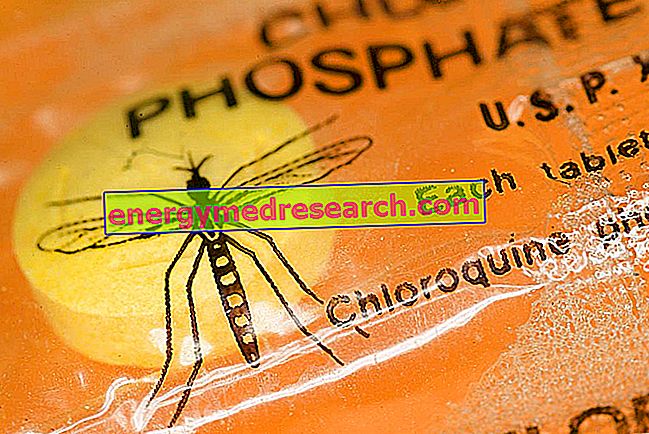Generality
Nougat is a sweet Italian food product, of which two varieties are mainly recognized: hard and soft (obviously different for some ingredients and cooking process). The nougat is consumed mainly in the winter period at the turn of the Christmas holidays; however, contrary to what one might believe, nougat is NOT a difficult food to find abroad.

In Italy there is not a single nougat recipe, indeed, there are as many as there are areas that produce it as a "specialty". The most famous and delicious nougats are certainly those of Cremona, Benevento, Alba and Caltanissetta.
History of nougat: it seems that the nougat is NOT the fruit of our culinary intellect, or at least NOT completely; the prevalence of bibliographic research sources attributes the merit of its discovery to the Arab people, who (from 827 to 1091) also occupied the Sicilian island for over 250 years. One of the most famous Italian nougats is precisely that of Caltanissetta where, by inheritance, it is still called the Arabic term " qubayta "; to the sellers of nisseni nougat corresponds the noun of cubaitari .
Some readers will wonder how the Arabs and Sicilians were able to produce the nougat before Christopher Columbus connected the mercantile routes with the New Continent (thanks to which the first sugar reached the Italian peninsula realms). Well, the Sicilian-Arabian island could do without the importation of American sugar only thanks to the supply of Arabia felix ... with an advance of 500 years on the crossing of the famous Genoese navigator.
NB : One of the most important historical-bibliographical references to the origins of torrone is De medicinis et cibis smplicibus, written by an Arab doctor in the 11th century AD, in which clear reference is made to torrone with the term turun .
As is well known, Sicily was not the only occupation colony of the Middle Eastern people; even the Spanish peninsula was a "victim" and, not surprisingly, even here the nougat has become a local specialty (Gigona - Alicante). However, the first bibliographical findings place the Spanish nougat recipe only in the 16th century.
The origin of the Cremonese torrone is older; according to the Lombard tradition, it seems that the first nougat in the area was served on 25 October 1441 at a wedding banquet between the Sforza and the Visconti; the dessert had the shape of Torrazzo, the bell tower of the city of Cremona (from which perhaps the very name of the torrone originates). The fact remains that "on paper", the first mention of the Cremona nougat dates back only to 1543.
Homemade Soft Nougat - Quick Recipe
X Problems with video playback? Reload from YouTube Go to Video Page Go to Video Recipes Section Watch the video on youtubeProduction
Nougat is a dessert characterized by a BASE mixture consisting of: sugar, glucose, egg whites, honey, almonds or hazelnuts or pistachios or walnuts, and a cover made from two thin wafers.
The nougat production process is peculiar and is based on the continuous and uninterrupted mixing of the dough, with a gradual increase in temperature (until it reaches a soft and foamy consistency). The initial beating speed of the nougat must be very high to facilitate assembly and increase in volume, while the temperature should NOT exceed 40 ° C.
Proceed with the solution of the icing sugar together with the glucose, the freeze-dried egg white diluted in 1: 4 solution, and possibly a small percentage of water; as the temperature and volume increase, the mixture then becomes whitish. Finally the honey is integrated which, based on its quantities, will give the specific taste to the nougat.
Nutritional composition for 100g of almond nougat - Reference values of the food composition tables - INRAN | ||||||||||||||||||||||||||||||||||||||||||||||||||||||||||||||||||||||||||||||||||||
 | ||||||||||||||||||||||||||||||||||||||||||||||||||||||||||||||||||||||||||||||||||||
Nutritional values (per 100 g of edible portion) | ||||||||||||||||||||||||||||||||||||||||||||||||||||||||||||||||||||||||||||||||||||
| ||||||||||||||||||||||||||||||||||||||||||||||||||||||||||||||||||||||||||||||||||||
The nougat mixture prepared in this way must be mounted for at least 60 minutes, after which it goes straight into cooking; the latter is carried out with a minimum mixing speed at a temperature of about 90 ° C. Thus the almost complete dehydration of the nougat occurs.
The toasted nuts are then added in percentages of 30-55% of the total, taking care that the dough maintains a temperature of about 50-60 ° C.
To give the nougat shape it is finally possible to work it by hand in wooden molds (covering it with wafers and pressing it by hand) or mechanically by rolling (on cold rollers that lay the nougat sheet between two wafers at the exit).
In both cases the nougat is cut, at 40 ° C if it is hard or at room temperature if it is soft.
Nutritional properties
Nougat is a sweet food that has many negative aspects to consider. First of all, remember that the large concentration of simple sugars tends inexorably to favor the formation of tooth decay (especially in the case of soft nougat, which tends to adhere tenaciously to the enamel); not least, the risk of dental fracture. The hard nougat is in fact one of the foods most responsible for cracking the teeth, which is why it is advisable to pay close attention during chewing.
Nougat is also a food rich in total calories, fundamentally made from sugar (simple carbohydrates), honey (simple carbohydrates) and dried fruit (lipids); these characteristics make the nougat an absolutely inadvisable food in case of overweight (due to the excess of calories), but also of type 2 diabetes mellitus (due to the glycemic load and index not suitable for the pathology).
The portions and the frequency of consumption of the nougat should always take into account the daily diet and above all the composition of the meal which, usually, precedes the putting on the table. However, a weekly frequency and portions greater than 10-20g are already considered excessive.
Bibliography:
- Mangitalia - C. Barberis - Donzelli Virgola - page 267



